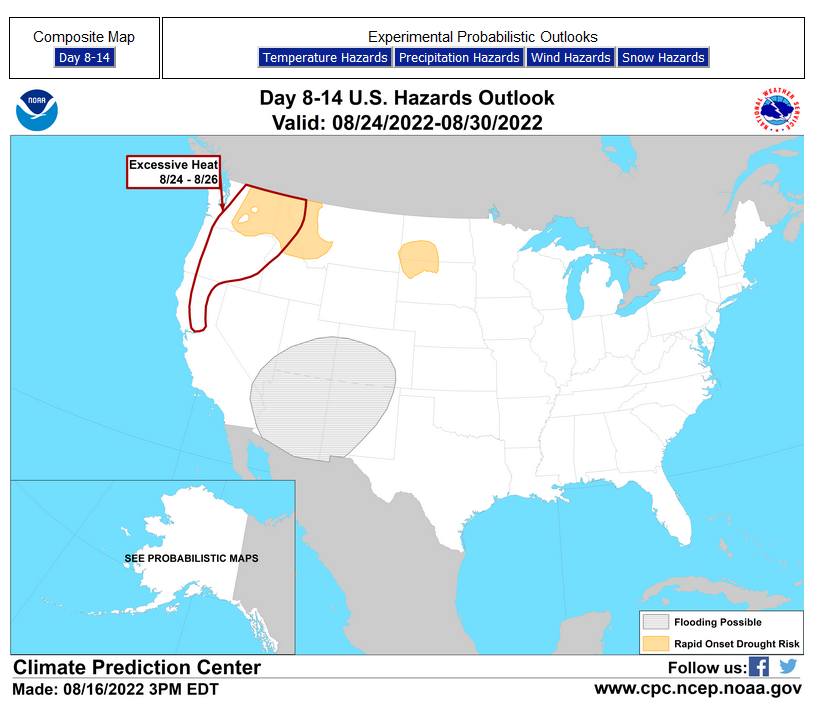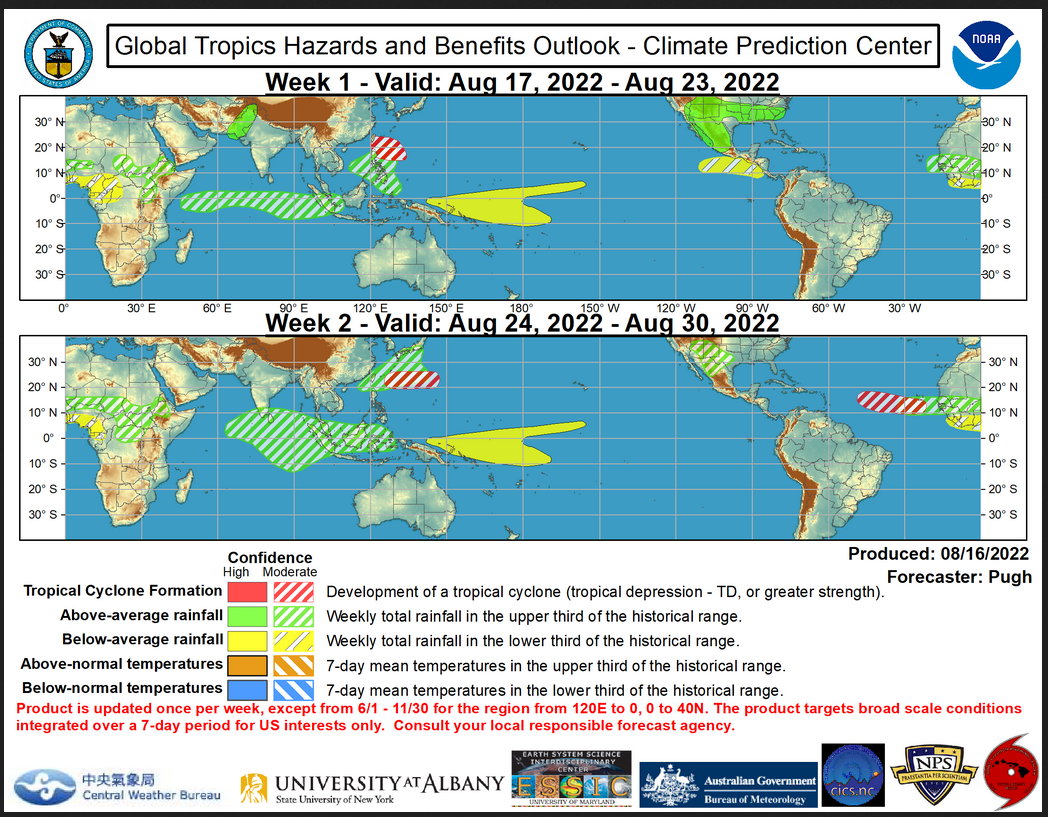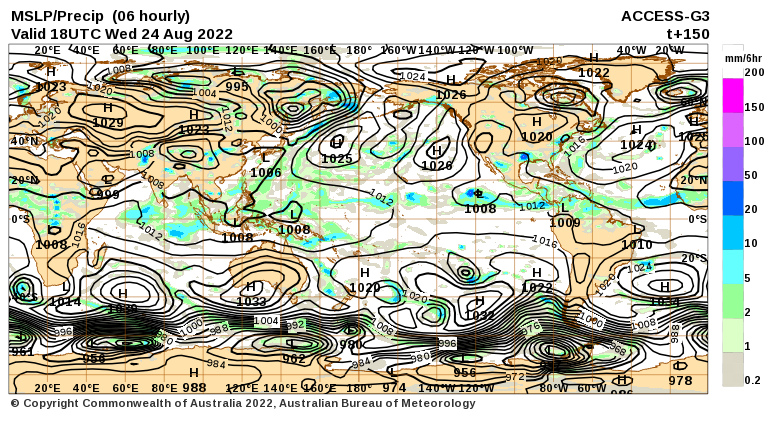Here is what we are paying attention to this evening and the next 48 hours from this evening’s NWS Forecast.
...Significant heavy rainfall event may lead to major flash flood impacts in the Southwest... ...Hot weather persists for California and the Pacific Northwest with numerous heat-related advisories in place... ...Shower and thunderstorm chances continue for the Southeast to Southern Plains and from the Northern Plains into the Midwest into the weekend...
Continuation of the NWS Short Range Forecast (It is updated twice a day and these updates can be found here.
A significant heavy rainfall event is forecast for the Southwest as a mid-level low and anomalously high moisture associated with a remnant tropical wave help to enhance storm development associated with an already active Monsoon. There is a Moderate Risk of Excessive Rainfall Friday and Saturday for portions of southeastern Arizona and southwestern New Mexico. Areal average rainfall totals of 2-3 inches, with locally higher amounts approaching 5-6 inches, may lead to numerous instances of flash flooding. Slight Risks for Excessive Rainfall are also in place for a broader area into the Four Corners region Friday and the Southern High Plains Saturday as additional scattered instances of flash flooding are possible. Areas of complex terrain, slot canyons, arroyos, and burn scars are at an increased risk for flash flooding. Meanwhile, to the west, hot weather will persist from California northward into the Pacific Northwest under the influence of an upper-level ridge. Numerous heat-related advisories are in place as temperatures are forecast to reach into the upper 90s to low 100s Friday for portions of the interior Pacific Northwest and northern Great Basin. As an upper-level trough approaches from the west, temperatures will cool a bit Saturday with highs in the low to mid-90s. Further south in the central valleys of California, the heat will remain more intense through Saturday with low to mid-100s expected. Widespread showers and thunderstorms will continue along a wavy, stationary front stretching from the Southeast into the Southern Plains and also with a frontal system moving from the Northern Plains into the Midwest into the weekend. The greatest chance for some scattered instances of flash flooding will be for coastal South Carolina Friday. Otherwise, only isolated impacts are expected. Elsewhere, well below normal high temperatures in the 70s to low 80s are forecast for most of the Southwest, Great Basin, and Southern Rockies due to the widespread clouds and rain. Below normal highs are also forecast Friday for the Southeast (low to mid-80s) and for the Northern Plains (low to mid-70s), with temperatures increasing a few degrees closer to normal Saturday. Hotter temperatures in the upper 80s will return to the Mid-Atlantic and New England with otherwise tranquil conditions expected.
Maps that relate the forecast to geography can be found by clicking Here for Day 1 and Here for Day 2.
Here is a 60-hour animated forecast map that shows how the short-term forecast is expected to play out.
If it needs to be updated click here.
HAZARDS OUTLOOKS
Click here for the latest complete Day 3 -7 Hazards forecast which updates only on weekdays. Once a week probably Monday or Tuesday I will update the images. I provided the link for readers to get daily updates on weekdays. Use your own judgment to decide if you need to update these images.
Worldwide Tropical Forecast
(This graphic updates on Tuesdays) If it has not been updated, you can get the update by clicking here
Detailed Maps and Reports for the Western Atlantic and the Pacific Oceans
Below are three maps that summarize the situation for the Atlantic, Eastern and Central Pacific. Additional information can be accessed by clicking HERE
First the Atlantic
Click to view the forecast map and have access to additional information https://www.nhc.noaa.gov/gtwo.php?basin=atlc&fdays=5
Then Eastern Pacific
Click to view the forecast map and have access to additional information https://www.nhc.noaa.gov/gtwo.php?basin=epac&fdays=5
Then Central Pacific
Click to view the forecast map and have access to additional information https://www.nhc.noaa.gov/gtwo.php?basin=cpac&fdays=5
And the Western Pacific
Click to view the forecast map and have access to additional information https://www.metoc.navy.mil/jtwc/jtwc.html
Some Intermediate-Term Outlooks
Links to “Outlook” maps and discussions for three time periods. Days 6 – 10, Days 8 – 14, and Weeks 3 and 4. An outlook differs from a forecast based on how NOAA uses these terms in that an “outlook” presents information from deviation from normal and the likelihood of these deviations.
You have to click on the links because they do not update automatically and I do not want to have stale images in the article. But it is not difficult to click on a link and you get a large image plus a discussion. On Fridays in a separate article, we will show the images and provide a link in this article that article. But remember what you will see is the images as of Friday. But here you can get the current images simply by clicking on them. Then hit the return arrow at the upper left of your screen to return to the article. You will not find this information easily anywhere else.
Right now you can find these maps here (We show them every Friday there but you can click above and find them).
World Forecast for Day 6 (Currently Set for Day 6 but the reader can change that)
World Weather Forecast produced by the Australian Bureau of Meteorology. Unfortunately, I do not know how to extract the control panel and embed it into my report so that you could use the tool within my report. But if you visit it Click Here and you will be able to use the tool to view temperature or many other things for THE WORLD. It can forecast out for a week. Pretty cool. Return to this report by using the “Back Arrow” usually found top left corner of your screen to the left of the URL Box. It may require hitting it a few times depending on how deep you are into the BOM tool. Below are the current worldwide precipitation and air pressure forecasts for six days out. They will not auto-update and right now are current for Day 6. If you want the forecast for a different day Click Here I will try to update this map each day but you have the link so you can access the dashboard and get a wide variety of forecasts.
I mostly rely on the reader to interpret world maps. For this map, areas of expected precipitation for the date and time shown are clearly shown.
The number of High-Pressure systems shown is called the Wave Number. Maybe I will discuss WN someday. But it shows how many Rossby Waves there are around the World. Sometimes they are hard to count. Counting Low-Pressure systems should provide the same WN. Rossby Waves are the way the temperature distribution of the Planet remains in balance. It is basically the science of fluid dynamics. It can be very helpful in predicting the movement of weather patterns.
Month to Date Information
Month to date Temperature can be found at https://hprcc.unl.edu/products/maps/acis/MonthTDeptUS.png
Month to date Precipitation can be found at https://hprcc.unl.edu/products/maps/acis/MonthPNormUS.png






